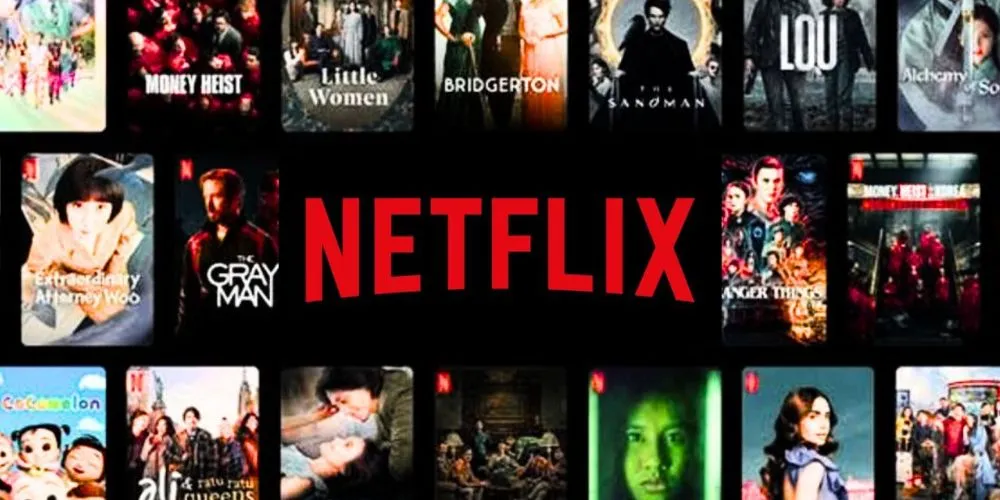Once a DVD-by-mail service, Netflix has dramatically transformed the global entertainment industry through its pioneering streaming platform. Launched in 2007, Netflix’s shift from physical media distribution to digital streaming reshaped how people consume television shows and movies. With millions of subscribers worldwide, its influence has extended beyond simple content distribution to include original content production, sparking a revolution in how entertainment is created, delivered, and experienced. This case study examines Netflix’s role in disrupting traditional media, its technological innovations, and the profound impact of its business model on the entertainment ecosystem.
Background of Netflix’s Evolution
Founded in 1997 by Reed Hastings and Marc Randolph, Netflix initially operated as a DVD rental service, allowing customers to rent movies online and receive them by mail. Its early business model was a direct competitor to brick-and-mortar video rental stores like Blockbuster.
The Shift to Streaming
In 2007, Netflix took a revolutionary step by introducing streaming services, which allowed users to watch a selection of content online. This move aligned with the rise of broadband internet, providing customers instant access to movies and TV shows without waiting for physical DVDs to arrive. It marked the beginning of the end for traditional video rental services and changed consumer expectations around instant, on-demand content.
International Expansion
Netflix’s growth strategy saw it expand internationally, launching in Canada in 2010 and rapidly moving into Europe, Latin America, and beyond. By 2016, the platform was available in over 190 countries, cementing its position as a global entertainment provider. Its wide-reaching impact made it not just a U.S. phenomenon but a cultural force worldwide.
Technological Innovations in Streaming
Netflix’s dominance in the streaming industry is not just a result of good timing; it has also been fueled by cutting-edge technological innovations that optimize viewing experience and content delivery.
Adaptive Streaming Technology
Netflix pioneered adaptive streaming technology, which dynamically adjusts video quality based on the user’s internet bandwidth. This innovation allows the platform to deliver a smooth streaming experience regardless of network conditions, ensuring that even users with slower internet connections can enjoy content without buffering interruptions.
Content Recommendation Algorithms
One of Netflix’s most significant innovations is its personalized content recommendation system. By leveraging machine learning algorithms, the platform analyzes user behavior to suggest content that aligns with individual preferences. This has improved user engagement and contributed to binge-watching culture, as viewers are fed content they will likely enjoy.
High-Quality Streaming
Netflix was one of the first platforms to invest in high-definition (HD) and 4K streaming technology. As early as 2013, the platform began offering 4K Ultra HD content, positioning itself as a leader in premium content quality. This technological investment has been crucial in attracting tech-savvy consumers and reinforcing its position as a high-quality content provider.
Impact of Netflix’s Original Content
A key turning point in Netflix’s strategy was its transition from merely distributing content to producing original programming. This shift had a transformative effect on the entertainment industry.
The Launch of Original Programming
In 2013, Netflix launched its first original series, House of Cards, signaling its entry into content production. This series was critically acclaimed and proved that a streaming platform could create award-winning, premium content. This bold move differentiated the platform from other streaming services and solidified its reputation as a serious player in Hollywood.
Binge-Watching Culture
With the release of House of Cards, Netflix introduced the concept of releasing entire seasons of a series at once. This allowed users to binge-watch shows at their own pace, a departure from network television’s traditional weekly release model. This change in content delivery redefined how audiences consume television, encouraging prolonged viewing sessions and increasing platform engagement.
Global Content Strategy
Netflix’s original content strategy has expanded to include global productions, with shows like Money Heist(Spain), Lupin (France) and Sacred Games (India). It has become an international platform that produces content in various languages and caters to different cultures. This approach has broadened its audience base and introduced diverse narratives that appeal to many viewers.
Challenges Faced by Netflix in the Streaming Wars
Despite its success, Netflix faces numerous challenges in maintaining its dominance in an increasingly competitive streaming landscape.
Competition from Streaming Rivals
The streaming market has become increasingly crowded, with major competitors like Disney+, Amazon Prime Video, and HBO Max entering the fray. With vast content libraries and loyal fan bases, these companies pose a significant threat to Netflix’s subscriber growth. Disney+, in particular, has leveraged its control over popular franchises like Marvel, Star Wars, and Pixar to attract millions of subscribers, directly challenging Netflix’s dominance.
Rising Content Costs
As Netflix continues to produce original content, the cost of maintaining its content library has skyrocketed. In 2020 alone, the company spent over $17 billion on content production, and this number has only continued to grow. With increasing competition and content prices, Netflix must ensure that its investment in content delivers returns in the form of subscriber retention and growth.
Subscriber Growth Slowdown
While Netflix has experienced rapid growth, recent reports indicate that subscriber growth has slowed, particularly in mature markets like the U.S. and Europe. To sustain growth, the company must focus on international markets and continue innovating in its content offerings and technology.
The Impact of Netflix on the Entertainment Industry
Netflix’s disruptive business model and technological advancements have widely affected the traditional entertainment industry.
The Decline of Cable Television
Netflix’s rise has contributed to the decline of cable television subscriptions, a phenomenon known as cord-cutting. Many consumers have canceled their cable subscriptions for cheaper, more flexible streaming services like Netflix. This shift has forced traditional cable companies to adapt or lose customers, further accelerating the decline of linear television.
Influence on Content Production
The success of Netflix’s original programming has influenced how content is produced and distributed across the industry. Traditional networks and studios have had to rethink their distribution models, with many launching streaming services to compete with Netflix. Additionally, the binge-watching model has influenced how series are written and produced, with shorter seasons and more serialized storytelling becoming the norm.
Awards and Industry Recognition
Netflix’s dominance in original content has earned it significant recognition in the entertainment industry. The platform has garnered numerous awards and nominations at prestigious events like the Oscars and Emmys, traditionally dominated by Hollywood studios and television networks. This shift has blurred the lines between traditional cinema and digital streaming, with streaming platforms increasingly being seen as legitimate venues for high-quality content.
Future Outlook for Netflix and the Streaming Industry
As Netflix looks toward the future, several factors will determine its continued success and influence in the entertainment industry.
Expanding into New Markets
To sustain its growth, Netflix focuses on expanding into emerging markets, particularly Asia and Africa. These regions represent untapped subscriber bases with growing internet access and demand for entertainment. Localized content production will be essential in Netflix’s strategy to capture these markets.
Innovation in Interactive Content
In addition to producing traditional series and films, Netflix is exploring new forms of interactive content. The success of Black Mirror Bandersnatch, an interactive film that allowed viewers to make choices affecting the plot, demonstrated the potential of this format. Netflix plans to invest further in interactive storytelling to differentiate itself from competitors.
Sustainability of the Subscription Model
As Netflix’s content costs continue to rise, questions remain about the sustainability of its subscription-based business model. To offset rising production expenses, the company may explore additional revenue streams, such as advertising or tiered subscription pricing. The company’s ability to innovate in its business model will be crucial to its long-term success.
Conclusion
The Netflix streaming revolution has transformed how people watch television and movies and reshaped the entertainment industry. From pioneering binge-watching culture to disrupting traditional cable and content distribution models, the platform’s influence is far-reaching. At the same time, challenges such as competition, content costs, and slowing subscriber growth Netflix’s technological innovations, original content production, and global strategy have established it as a leader in the digital entertainment age. As the streaming wars continue, Netflix’s ability to adapt and innovate will determine its future in the ever-evolving media landscape.










